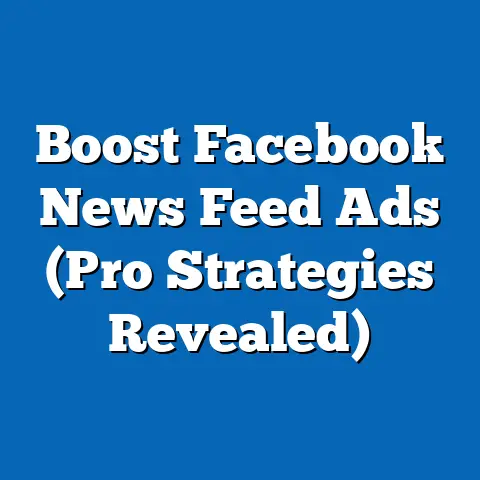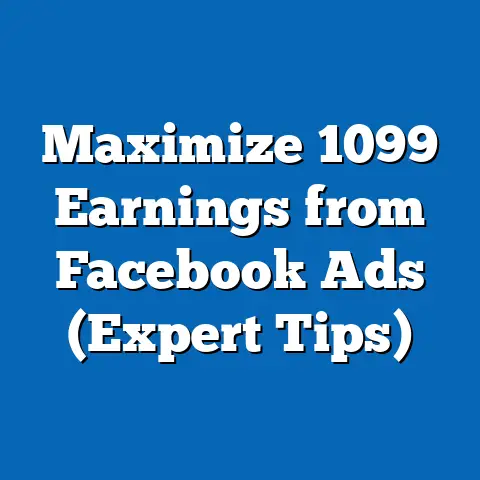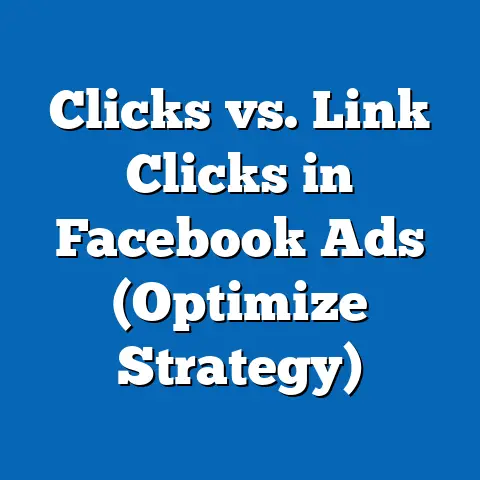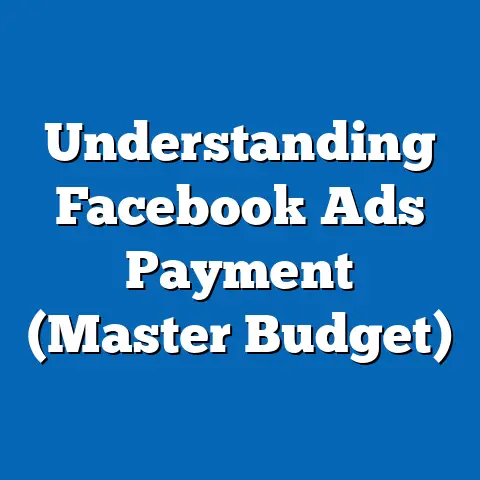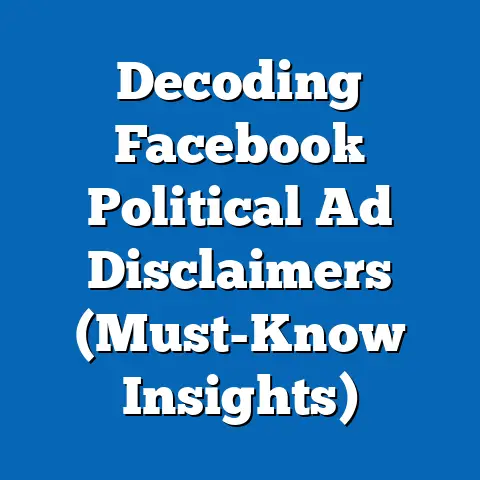Boost 3-Second Facebook Video Views (Expert Strategies)
In the fast-evolving landscape of social media marketing, short-form video content has emerged as a dominant force, with platforms like Facebook prioritizing video engagement to capture user attention. Specifically, 3-second video views—a metric defined by Facebook as a video playing for at least 3 seconds—have become a critical benchmark for assessing content performance and algorithmic favorability. According to Meta’s 2023 quarterly report, video content accounts for over 50% of time spent on Facebook, with short-form videos seeing a 35% year-over-year increase in engagement.
This presents a golden opportunity for brands, creators, and marketers to leverage 3-second views as a gateway to broader reach and deeper audience connection. Research from Sprout Social (2023) indicates that 68% of marketers who prioritize video content on Facebook report higher engagement rates compared to static posts. Moreover, demographic data reveals that younger audiences (18-34 years) are driving this trend, contributing to 62% of total video views on the platform.
Historically, video engagement on Facebook has grown exponentially since the introduction of autoplay in 2014, with 3-second views becoming a standardized metric by 2016. Today, as we look toward 2025, projections from eMarketer suggest that video ad spending on Facebook will surpass $25 billion globally, fueled by the demand for short, impactful content. This article delves into expert strategies for boosting 3-second Facebook video views, supported by data-driven insights, demographic trends, historical context, and actionable recommendations.
The Importance of 3-Second Views: Decoding the Metric
Why 3-Second Views Matter
Facebook’s algorithm heavily weights early engagement metrics, particularly 3-second views, as an indicator of content relevance. According to a 2022 study by Socialbakers, videos that achieve high 3-second view counts within the first 24 hours are 40% more likely to be promoted in user feeds. This initial engagement acts as a signal to the platform that the content is worth amplifying.
Beyond algorithmic benefits, 3-second views serve as a stepping stone to longer watch times and conversions. Data from HubSpot (2023) shows that 54% of users who watch a video for at least 3 seconds are likely to continue for 10 seconds or more, creating a ripple effect for brand exposure. For marketers, mastering this metric is not just about visibility—it’s about building a foundation for sustained interaction.
Defining the Metric
A 3-second view is counted when a video plays for at least 3 seconds, whether autoplayed or manually started, as per Facebook’s official measurement guidelines. This differs from other platforms like YouTube, where view counts often require longer engagement (30 seconds). Understanding this low threshold is key to crafting content that hooks viewers instantly, as the first few seconds determine whether the algorithm will push the video further.
Statistical Trends: The Rise of Short-Form Video Engagement
Overall Growth in Video Views
The explosion of short-form video content on Facebook is undeniable. According to Meta’s 2023 data, daily video views on the platform have increased by 25% since 2021, with over 2 billion users engaging with video content monthly. Of these views, short videos (under 60 seconds) account for 70%, underscoring the importance of concise, attention-grabbing formats.
Engagement metrics further highlight the power of brevity. Videos under 15 seconds achieve an average 3-second view rate of 85%, compared to just 60% for videos over 2 minutes, per a 2023 report by Buffer. This trend aligns with broader consumer behavior shifts toward quick, digestible content in an era of shrinking attention spans.
Ad Performance and Revenue Impact
From an advertising perspective, 3-second views are a gateway to measurable ROI. A 2022 Nielsen study found that video ads achieving high 3-second view rates correlate with a 30% higher brand recall among viewers. Additionally, Facebook’s ad revenue from video content grew by 18% year-over-year in 2023, reaching $18.5 billion, as reported by eMarketer.
Marketers who optimize for 3-second views often see cost-per-view reductions of up to 22%, according to a 2023 analysis by AdEspresso. This efficiency makes short-form video a cost-effective strategy for brands of all sizes, particularly when paired with targeted demographic campaigns.
Demographic Breakdowns: Who’s Watching and Why
Age-Based Engagement
Demographic data reveals stark differences in how various age groups interact with video content on Facebook. The 18-24 age group leads the charge, accounting for 38% of total 3-second views, per a 2023 Pew Research Center report. This cohort values trendy, fast-paced content, often engaging with videos featuring humor, challenges, or influencer-driven narratives.
The 25-34 age bracket follows closely, contributing 24% of views, with a preference for lifestyle and educational content. In contrast, users aged 35-54 (18% of views) and 55+ (9% of views) show lower engagement rates, often prioritizing longer-form or informational videos over quick snippets. These trends suggest that content creators must tailor their approach—think memes and viral hooks for younger viewers, and value-driven messaging for older demographics.
Gender and Regional Variations
Gender differences in video engagement are less pronounced but still noteworthy. A 2023 Statista survey found that male users account for 52% of 3-second views, often gravitating toward sports and tech-related content, while female users (48%) engage more with beauty, fashion, and family-oriented videos. This split offers opportunities for gender-specific targeting to maximize early viewership.
Regionally, engagement varies significantly. North America and Europe collectively drive 45% of global 3-second views, fueled by high smartphone penetration and robust ad spending. However, Asia-Pacific is the fastest-growing region, with a 40% year-over-year increase in video views, driven by markets like India and Indonesia, according to Meta’s 2023 regional insights. Marketers must consider cultural nuances and language preferences when crafting content for these diverse audiences.
Historical Comparisons: From Static Posts to Video Dominance
The Evolution of Facebook Content (2010-2023)
In 2010, Facebook was primarily a platform for text updates and photo sharing, with video content constituting less than 5% of total posts, per a 2011 report by Social Media Examiner. By 2014, the introduction of autoplay videos marked a turning point, boosting video views by 300% within two years. The 3-second view metric, formalized in 2016, became a standard for advertisers to measure early engagement.
Fast forward to 2023, and video content dominates the platform. A historical analysis by eMarketer shows that video posts now account for 60% of total engagement, compared to just 15% for static images. This shift reflects both technological advancements (e.g., faster internet speeds) and user preferences for dynamic, interactive media.
Changing Metrics and Algorithm Updates
Facebook’s algorithm has evolved alongside content trends. In 2016, the platform prioritized videos with high completion rates, but by 2020, early engagement metrics like 3-second views took precedence, as noted in Meta’s developer blog. This change rewarded creators who could capture attention immediately, leading to a surge in short-form content.
Historically, brands that adapted to these updates saw significant gains. For instance, a 2018 case study by Hootsuite revealed that companies focusing on 3-second hooks increased their organic reach by 25% post-algorithm update. Today, this metric remains a cornerstone of successful video strategies, underscoring the importance of staying ahead of algorithmic shifts.
Expert Strategies for Boosting 3-Second Views
1. Craft Compelling Openings
The first 3 seconds of a video are make-or-break. A 2023 study by Wistia found that videos with dynamic visuals or bold text in the opening frame achieve 90% higher 3-second view rates. Start with high-energy visuals, a surprising fact, or a provocative question to stop scrollers in their tracks.
For example, a fitness brand might open with a quick clip of a dramatic transformation, while a food brand could showcase a mouthwatering dish being prepared. Pair these visuals with captions, as 85% of Facebook videos are watched on mute, per a 2022 Digiday report. Clear, concise text overlays ensure your message resonates even without sound.
2. Optimize for Mobile Viewing
With 98% of Facebook users accessing the platform via mobile devices (Statista, 2023), videos must be formatted for small screens. Use vertical or square formats (9:16 or 1:1 aspect ratios) to maximize screen real estate, as these formats achieve 35% higher engagement rates than horizontal videos, per Buffer’s 2023 data.
Additionally, ensure fast load times by compressing files without sacrificing quality. A 2022 Google study found that a 1-second delay in load time can reduce viewership by 20%. Mobile-first design is non-negotiable for capturing those critical early seconds.
3. Leverage Trending Content and Hashtags
Trending topics and hashtags can skyrocket initial views by aligning your content with what’s already capturing attention. According to Sprout Social (2023), videos tied to trending hashtags see a 50% higher 3-second view rate within the first 48 hours. Use tools like Facebook Insights or third-party platforms like Hashtagify to identify real-time trends.
For instance, during major events like the Super Bowl or global holidays, tailor your content to the conversation. A quick, relevant video clip with a popular hashtag can ride the wave of heightened user activity, boosting early engagement.
4. Target High-Engagement Demographics
As outlined earlier, younger audiences (18-34) dominate video engagement on Facebook. Use Facebook Ads Manager to target these demographics with precision, focusing on interests, behaviors, and locations that align with your brand. A 2023 AdEspresso report found that hyper-targeted campaigns achieve 28% higher 3-second view rates than broad campaigns.
For example, a gaming company might target males aged 18-24 with interests in esports, while a beauty brand could focus on females aged 25-34 interested in makeup tutorials. Layering demographic data with interest-based targeting ensures your video reaches the most receptive viewers.
5. Test and Iterate with A/B Testing
Not all hooks work equally well, which is why A/B testing is essential. Create multiple versions of your video with different openings, captions, or thumbnails, and test them on small audience segments. A 2022 Social Media Today study found that brands using A/B testing for video content improved 3-second view rates by 15% on average.
Use Facebook’s built-in analytics to track which variant performs best, then scale the winning version with a larger budget. Continuous testing ensures your content evolves with audience preferences and platform changes.
6. Invest in Paid Promotion for Initial Traction
Organic reach on Facebook has declined to an average of 5.2% in 2023, per Hootsuite data, making paid promotion a vital tool for boosting 3-second views. Allocate a small budget to promote videos to your target audience, focusing on cost-per-view (CPV) campaigns. Meta’s 2023 ad insights show that videos with paid boosts achieve 3x more views in the first 24 hours compared to organic-only posts.
Start with a modest daily spend ($5-10) to test performance, then increase investment for high-performing content. Paid promotion acts as a catalyst, helping your video gain the early traction needed for algorithmic amplification.
Contextual Factors Driving Video Engagement Trends
Technological Advancements
The rise of 5G networks and improved smartphone capabilities have made video consumption seamless, contributing to a 30% increase in mobile video views since 2020, per Cisco’s 2023 Internet Report. Faster load times and higher-quality playback mean users are more likely to engage with videos, even briefly. Marketers must ensure their content is optimized for these technological realities to avoid losing viewers to buffering delays.
Shifts in Consumer Behavior
Attention spans are shrinking, with a 2022 Microsoft study estimating the average at just 8 seconds—down from 12 seconds in 2000. This behavioral shift drives the preference for short-form content, as users scroll rapidly through feeds. Videos that fail to hook within the first 3 seconds are often skipped, making immediacy a critical design principle.
Platform Policies and Competition
Facebook’s push for video content is also a response to competition from platforms like TikTok and Instagram Reels. Meta’s 2022 annual report highlighted a $1 billion investment in creator tools and video monetization to retain users and advertisers. This strategic focus means videos with high 3-second views are more likely to be prioritized, creating a virtuous cycle for creators who master this metric.
Visual Data Reference: Key Metrics at a Glance
To illustrate the trends discussed, consider the following data points, which could be visualized in a chart or infographic for clarity:
- Video Engagement Growth (2016-2023): 3-second views rose from 1 billion daily in 2016 to over 4 billion in 2023 (Source: Meta).
- Demographic Breakdown of Views (2023): 18-24 (38%), 25-34 (24%), 35-54 (18%), 55+ (9%) (Source: Pew Research Center).
- Short vs. Long Video Performance: Videos <15 seconds (85% 3-second view rate) vs. >2 minutes (60%) (Source: Buffer).
- Regional Viewership Growth: Asia-Pacific (+40% YoY), North America/Europe (stable at 45% of global views) (Source: Meta).
These visuals would help readers grasp the scale and segmentation of video engagement trends at a glance, reinforcing the narrative with hard data.
Future Projections: The Road Ahead for Facebook Video Content
Looking toward 2025, the trajectory for short-form video on Facebook remains upward. eMarketer projects that video ad spending will grow to $25 billion globally, with short-form content accounting for 60% of this investment. This growth will likely be driven by continued user demand for quick, engaging formats and Meta’s ongoing algorithmic prioritization of video.
Demographically, the 18-34 age group is expected to remain the dominant force, though engagement among older users (35+) may rise as they adopt mobile-first behaviors, per a 2023 Forrester forecast. Regionally, Asia-Pacific will likely overtake North America as the largest market for video views by 2026, fueled by population growth and digital adoption.
For marketers, the implications are clear: mastering 3-second views will become even more critical as competition intensifies. Emerging technologies like AI-driven video editing and personalized ad targeting could further enhance early engagement rates, with a 2023 Gartner report predicting a 20% uplift in view metrics for brands adopting these tools by 2025. Staying ahead of these innovations while adhering to proven strategies will be key to sustained success.
Additionally, potential regulatory changes around data privacy could impact targeting precision, as seen with the EU’s GDPR and California’s CCPA. A 2023 Deloitte study warns that stricter policies may reduce ad reach by 10-15% in affected regions. Marketers should prepare by diversifying content strategies and building organic engagement to mitigate reliance on paid campaigns.
Conclusion: Seizing the 3-Second Opportunity
Boosting 3-second Facebook video views is not just a tactical goal—it’s a strategic imperative in an era where attention is the ultimate currency. With video content driving over 50% of user time on the platform and short-form formats leading engagement, brands and creators have a unique window to capture audiences and amplify reach. The data is unequivocal: videos that hook within 3 seconds achieve higher visibility, better ad performance, and stronger ROI.
By leveraging demographic insights, historical trends, and expert strategies—such as crafting compelling openings, optimizing for mobile, and targeting high-engagement audiences—marketers can position themselves for success. As we move toward 2025, the stakes will only rise, with technological, behavioral, and competitive forces shaping the video landscape. Those who adapt now, using data-driven approaches and forward-thinking tactics, will not only boost 3-second views but also build lasting connections in an increasingly crowded digital space.

